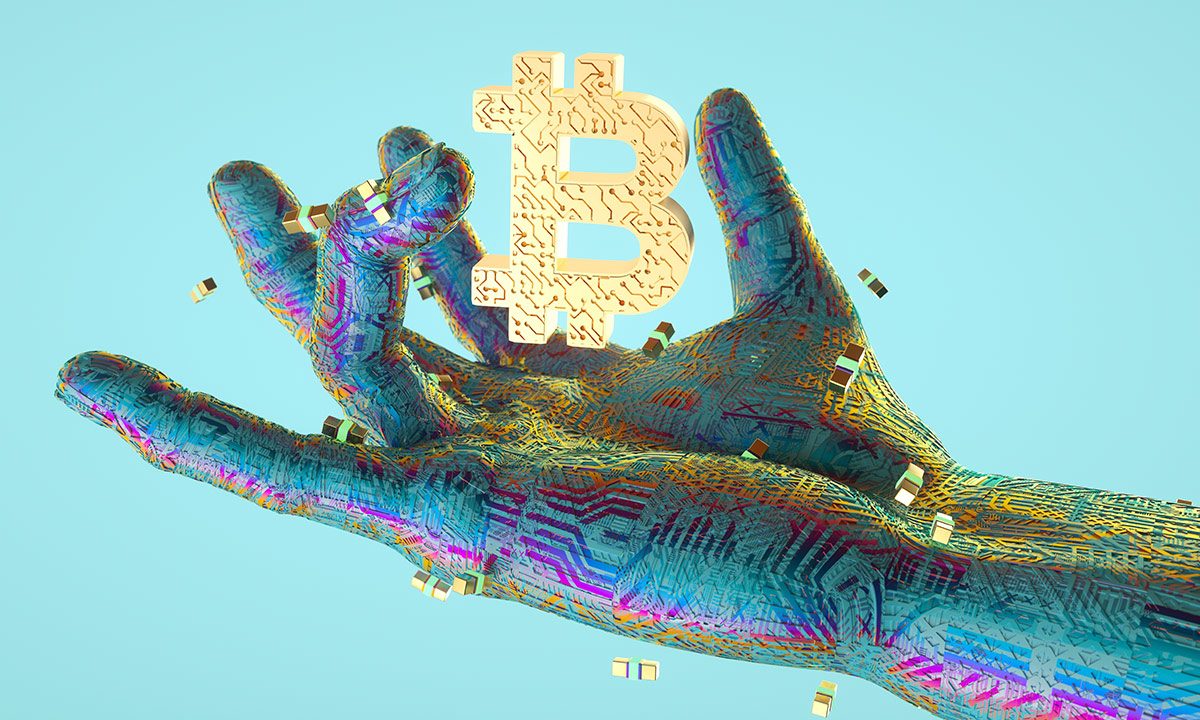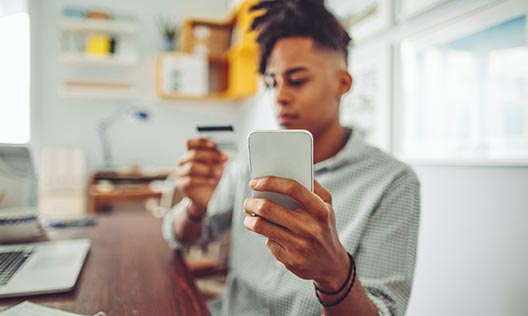In focus: A beginner’s guide to cryptocurrency
You can’t have missed the global buzz about cryptocurrencies. But just what are they, and how do they work? Journalist Maya Middlemiss explains

Bitcoin, Ethereum, Litecoin, Cardano…there are now thousands of different cryptocurrencies out there, and more and more people seem to be talking about them as part of the future. But what on earth are they, and are they safe to use and invest in? This article will help give you a head-start in understanding all things crypto.
First up: what IS a cryptocurrency?
Let’s step back a bit and clear up something else first. What, exactly, is MONEY?
In the UK – where we have a stable currency and access to modern banking – we take what money is for granted, even if we often wish we had more of it! Money is just the way we save up value, buy things, and measure what things are worth.
Who decides "this pair of trainers is worth £50”? It’s an agreement that we all reach and accept, via something called network effects – if everyone else agrees, so do we, and it just is. And that value is backed by state institutions, like the Bank of England, in the case of sterling.
Cryptocurrencies are simply money that is completely digital in form. Their value comes from the same network effects, and they are secured by complex mathematical algorithms (calculations and codes).
Their breakthrough came from the combination of blockchain technology and cryptography (find the definitions of key terms in the yellow panel), back with the launch of Bitcoin in 2009. Since then, thousands more cryptocurrencies have been created.
Ok… so you can’t hold them or see them?
No – at least, you can only see them in your digital wallet, or on blockchain, which is something like a spreadsheet that the whole world can collaborate on and see who has spent what.
It’s difficult to wrap your head around, but what blockchain technology enabled was a way to prove something digital was unique. This was a massive breakthrough, because think about any digital item like a photo – if you send that to someone, you make an instant duplicate of it, so you have a copy and so does your friend, or a hundred friends. It’d be no good if you could duplicate a bitcoin like that, as it would be worthless.
What blockchain brought to the table was the maths to make that cryptocurrency unalterable. This was then combined with cryptography, which makes it impossibly hard to tamper with or access someone else’s stuff on the blockchain, but very easy to see that stuff exists and has an owner.
Why does this matter?
It’s important to understand that cryptos are actual currency, rather than electronic payments.
If you buy something with a debit card, then sure, it’s totally digital – but it’s actually the same money, moving in a digital transaction from your existing bank account to someone else’s. The cash doesn’t physically move, at that point, from your account to someone else’s – it’s a promise between your bank and the seller to settle it up later. In that moment, though, it’s just numbers – and you might even have buyer protection if you get ripped off or change your mind.
With a cryptocurrency, it’s like paying cash for something direct to the seller – once it leaves your digital wallet and settles in the other person’s, that’s a done deal. You can’t change your mind or cancel it, and there’s no ‘middle-man’ like a bank involved.
Because they’re a totally separate kind of money, the value of cryptocurrencies vary – often massively – against other currencies, in the same way that foreign currencies’ values change (meaning you don’t always get the same amount of euros for your pounds when you go on holiday). And the network effects? They vary hugely across the thousands of different cryptocurrencies as well, so think about that when you hear about the next new hot coin on the market. If no one is using it, where does its value come from?
Separating money from government and bank control is appealing to many people politically, who see independent (non-state) money like Bitcoin as a solution to problems of generational wealth inequality, and things like inflation (when things cost more, as time goes by, so the pound in your pocket is worth less and less). But banks are also looking into creating their own digital currencies, using the same technology, to enjoy the speed and simplicity of cryptocurrencies.
Today there’s an explosion of technological development going on, making it easier to use different cryptos for everyday payments, and new trends like non-fungible tokens (NFTs) and decentralised finance (DeFi). So, it’s highly likely that cryptocurrencies will play a significant role in your future financial life, one way or another.

Can you get rich quick with cryptocurrencies?
Some people have made a LOT of money from crypto – but there’s a lot of risk too.
Right now, the crypto sector is largely unregulated – unlike traditional finance. For example, by law, banks have to tell you clearly about any risk involved when you invest in something that means it could reduce in value.
In crypto, anything goes. So, you won’t be surprised to learn that there are scammers out to get you, taking advantage of the combined buzz around crypto, the irreversible and fast transactions, and your own eagerness to earn a few quid.
Scammers targeting your grandparents usually try to get them to hand over their savings. What do they want from you? Well, you still have plenty of value to a criminal, including your identity, and clean accounts in your name. Fraudsters love that stuff.
According to Jonathan Leslie from NatWest’s fraud prevention team, organised crime gangs who need to launder illegal money are deliberately targeting young people to act as money mules via Instagram and TikTok – both by asking them to move or accept money from cryptocurrency exchanges and by luring them with the promise of payment in cryptocurrencies.
“It might sound like a harmless way to make a quick buck, to allow your account to be used,” he explained. “But the impact on your financial record can affect the rest of your life. There are consequences, in terms of potentially not getting loans, mortgages, even future employment opportunities.”
Jonathan understands why the idea of cryptocurrencies are attractive to young investors. “Stocks and shares aren’t particularly exciting. Crypto is the new kid on the block and has built a following in younger audiences, in part thanks to its promotion at major events like the F1, football matches and even The Grammys.” And the scammers know exactly how to get under people’s skin, creating a sense of FOMO, often using celebrities, and going after people who might finally have a bit of cash, like a student loan.
The chance to double your money might sound very attractive, but it’s essential to give yourself a reality check. What are you really being asked to hand over? Identity documents, virtual access to your device? What are they using to appeal to you in particular – is someone exploiting an influencer (who may not even be knowingly involved), or playing on feelings of generational divide?
Follow the money and turn your lie detectors up to max before you hand over anything – even your name.
Crypto: the key terms you need to know
Blockchain: the code that cryptocurrencies are built on, which creates an unbreakable, verifiable chain of transactions, then writes them down in a ‘block’. Each block links to the previous, and the next – and you can’t alter one without messing up the lot. The bitcoin blockchain is now more than 12 years long and includes every single transaction ever made using bitcoin!
CBDC: standing for central bank digital currency, CBDCs are a type of money that a central bank (like the Bank of England), can produce. They are a purely digital form of a pre-existing currency, so £10 of digital sterling would have exactly the same value – and be as stable – as a £10 note.
Consensus mechanism: this is the way a blockchain is secured and verified, and there are different models of this. The Bitcoin blockchain’s consensus mechanism is called ‘proof of work’ and has been criticised for its high use of electricity to power the complex algorithms needed to do it. Other blockchains may use different mechanisms, like ‘proof of stake’, where the security is provided by coin owners tying up their own coins to secure the network (staking them), for which they earn rewards.
Cryptography: this is the way that cryptocurrencies are kept safe. It’s a way of sending secure messages using encryption, meaning it’s nearly impossible to counterfeit or cheat. “Crypto” is Greek for “secret”.
Decentralised Finance (DeFi): this term embraces the whole melting pot of crypto coins, tokens, NFTs, exchanges, and more, driven by smart contract rules built into the blockchain, instead of human decisionmakers. Even whole businesses can operate in this way, known as decentralised autonomous organisations (DAOs).
Fungibility: this is another property of money that we don’t really think about, meaning that one pound is exactly the same (in terms of value, use, etc) as any other pound. Euros are fungible, even though they’re issued by national banks in different European countries, and cryptocurrencies are fungible too – one Dogecoin is worth the same as another Dogecoin, at least at any given time. You need to understand this word, to understand…
Non-Fungible-Tokens (NFTs): this is a fancy way of identifying a unique digital asset, like a piece of original art. There may be many memes and posters with the same image, but there's only one original Mona Lisa – and if Da Vinci had been able to register his painting on a blockchain, then its subsequent owners would be able to prove they and only they had the genuine article. It's 'non-fungible' because each one is unique – and it has specific value, which you can verify on a tamper-proof ledger. So in some ways it's like a cryptocurrency, with only one coin.
Stablecoins: these are a type of cryptocurrency that are designed to have a stable value by being linked to more traditional currencies or assets, such as gold. They’re considered less volatile than cryptocurrencies because of this.

Scams are not the only risk
The crypto market can change in a blink of an eye. Even with big-name crypto projects, the risks are real, simply because it’s all so new. You might remember the crypto crash of 2022 – which after peaking at $3 trillion USD took a massive hit and dropped to a two-year low of $769 billion1. A lot of people lost money, and while some rare wins do happen, another crypto crash is always a real possibility. It’s important to remember the risk involved with cryptocurrency – they’re considered a ‘volatile asset’, which means that the value of a crypto coin can swing up and down.
Volatility – the way prices swing up and down – is massive in crypto, and it’s easy to get caught up in a crowd trying to time when to buy and sell. Read about the Gamestop Wallstreetbets ‘pump and dump’ that happened last year, (involving traditional equities, not even crypto!). Many people got involved due to sheer FOMO and were left big losers when those who had blown it all up took their profits and vanished.
Also, sometimes, like any new business based on breakthrough technologies, things simply fail. You could invest in something which sounds amazing, but if they run out of money and go bust, the crypto token they sold you will be totally worthless. Do you honestly know enough to check things out before you invest? This is hard for experienced professionals, who can at least spread their risk on many different investments.
There are also regulatory risks to think about. The price of Bitcoin often swings madly on unpredictable events, like China banning crypto mining last year, for example.
Still ‘crypto curious’?
As Jonathan puts it, “Digital currencies aren’t going anywhere… Whether that’s Bitcoin, or Stablecoins, or central bank digital currencies (CBDC) – their time is coming, as we see the move away from cash to cards and fast, contactless payments. The UK Government even recently announced their plans to make the UK a global cryptoasset technology hub.”
The key is to educate yourself – both about the psychology of scammers and cybercrime, and that in crypto (just like everything else in life), if it sounds too good to be true, it probably is. Websites like Cointelegraph and Bitcoin Magazine are good places to start reading up, and there are loads of podcasts out there – just remember to be sceptical, as some might be focused on a particular currency or seeking investment.
Learn how to protect your digital identity and accounts from exploitation, and how to use technology to secure and protect everything from your banking to your social media. For example, make sure you are using two-factor authentication (2FA) to secure your accounts – that’s where you need to use more than one app or device to log into your account – and a password manager so you can create complex passwords for each one. And really think about where your advice is coming from – don’t trust someone because they’re famous for something else, or even a friend who says you can make money from a scheme that they may have been sucked into.
If you enjoy learning about crypto, check out the exploding career opportunities too. Blockchain developers can name their price, but you don’t have to be technically minded to get involved. Perhaps you can work in marketing or social, or you might be able to volunteer for a project you believe in and gain some experience (alongside crypto tokens that may or may not be worth something one day!). Investing time, rather than money, is a great place to start if you’re curious.
Sources: 1 Reuters, The crypto market bears the scars of FTX’s collapse, (November 2023)
Image credits: Adobe Stock







